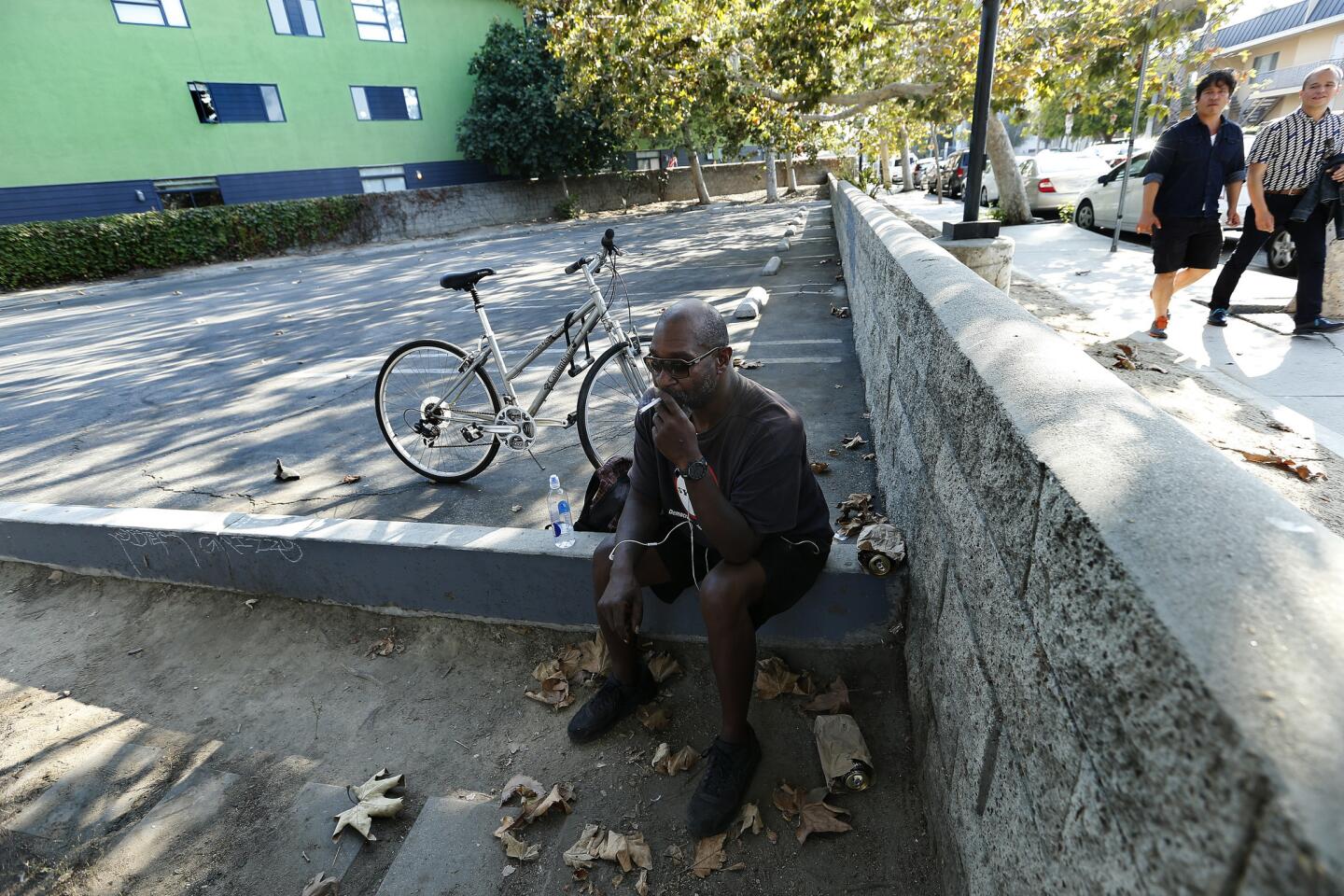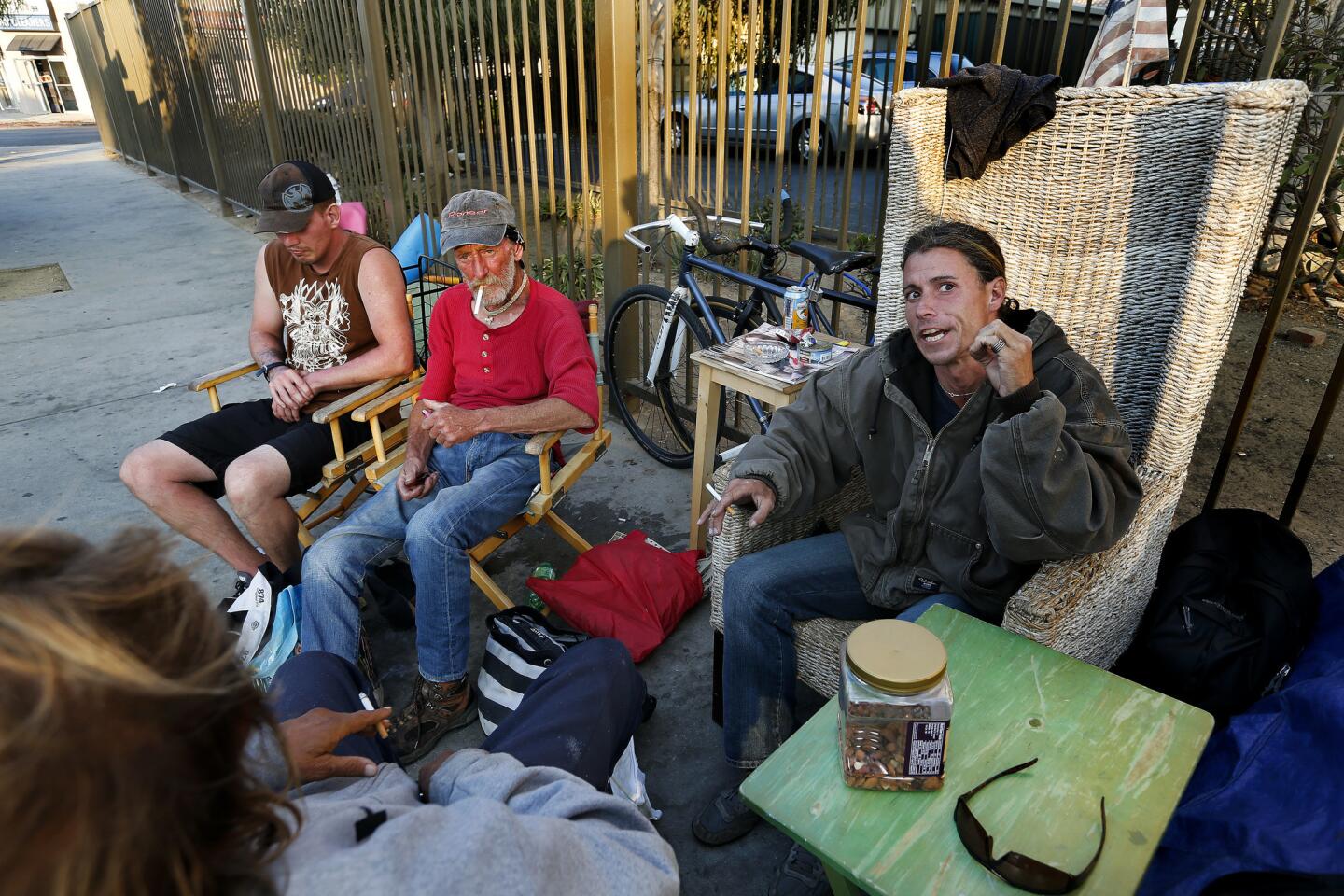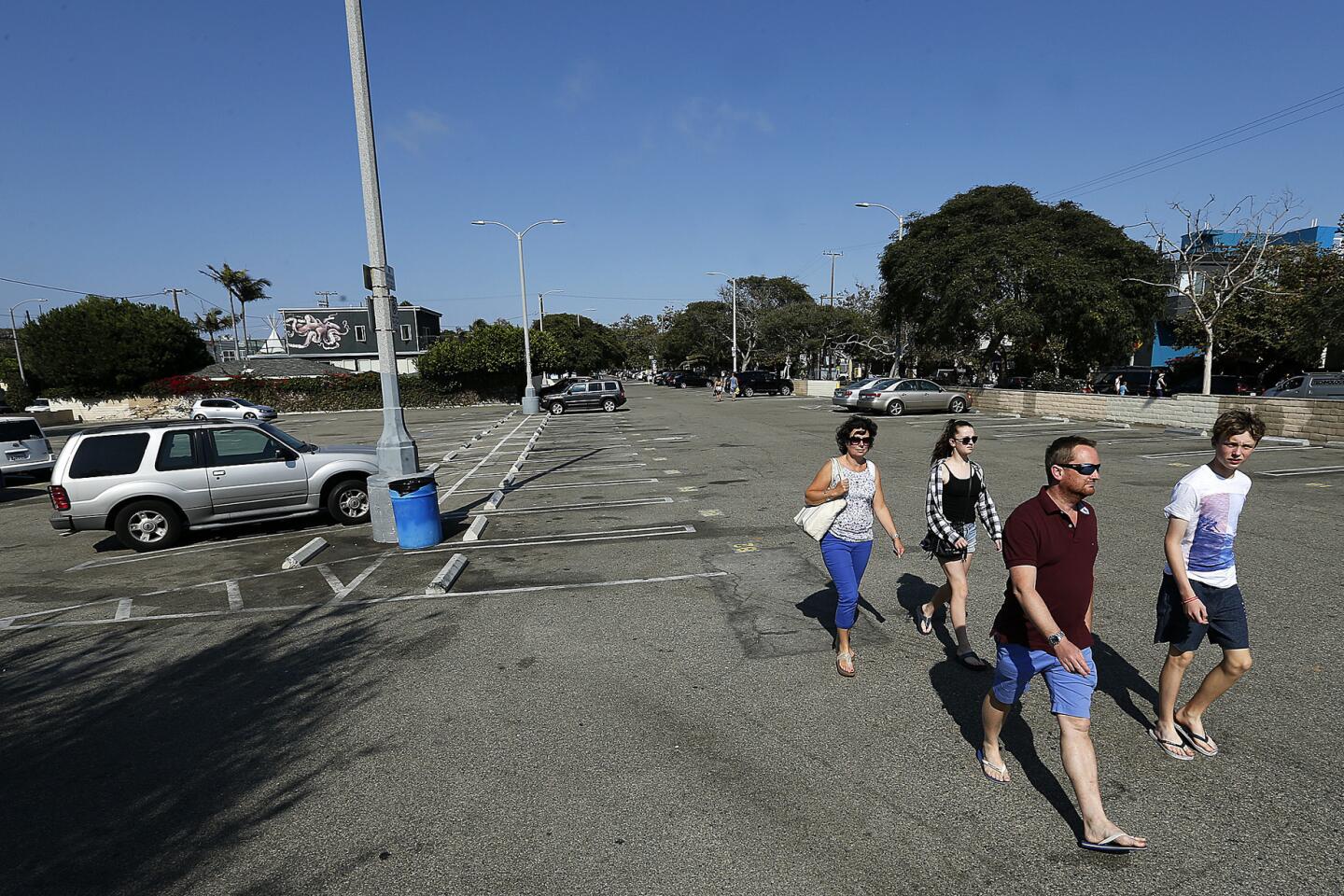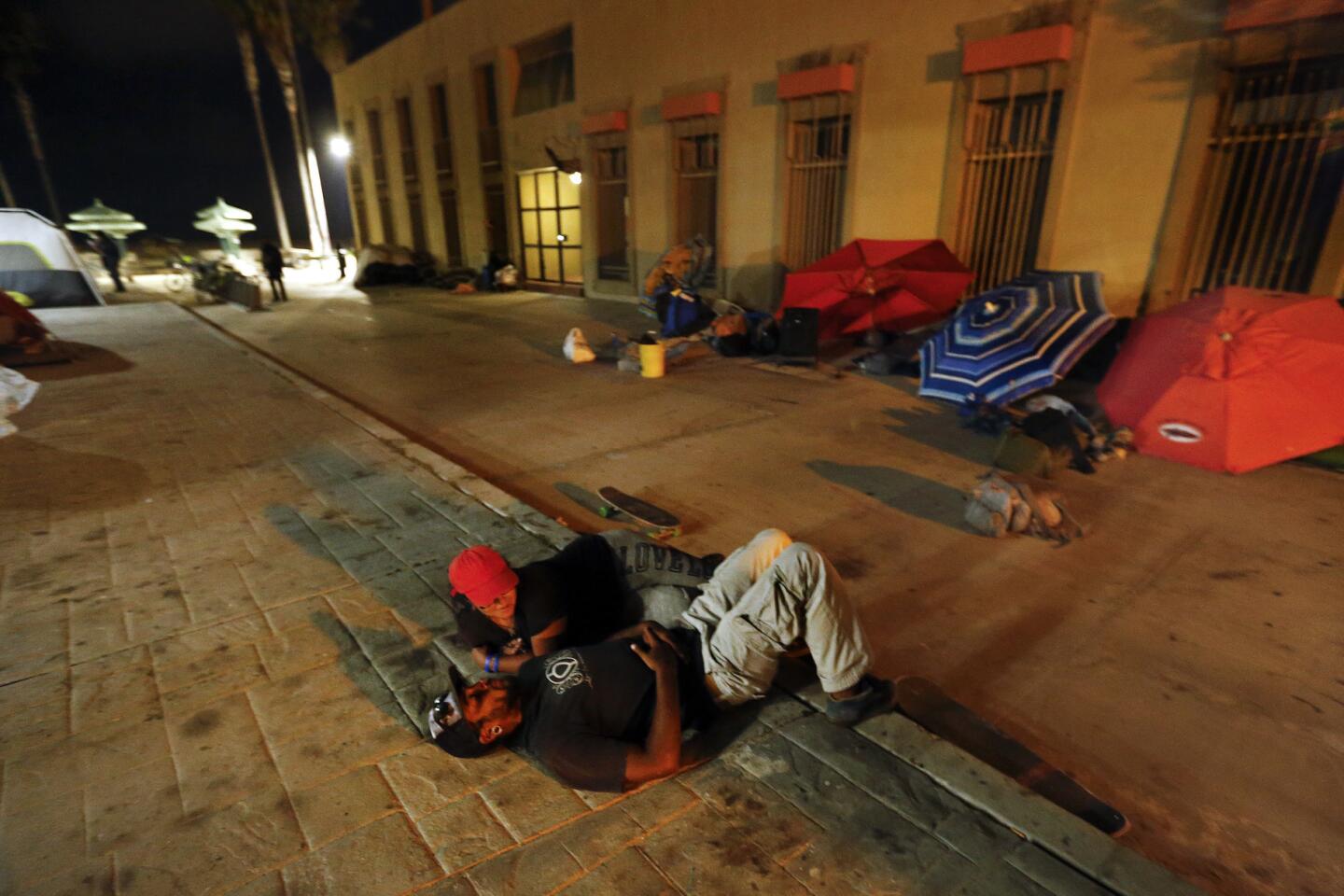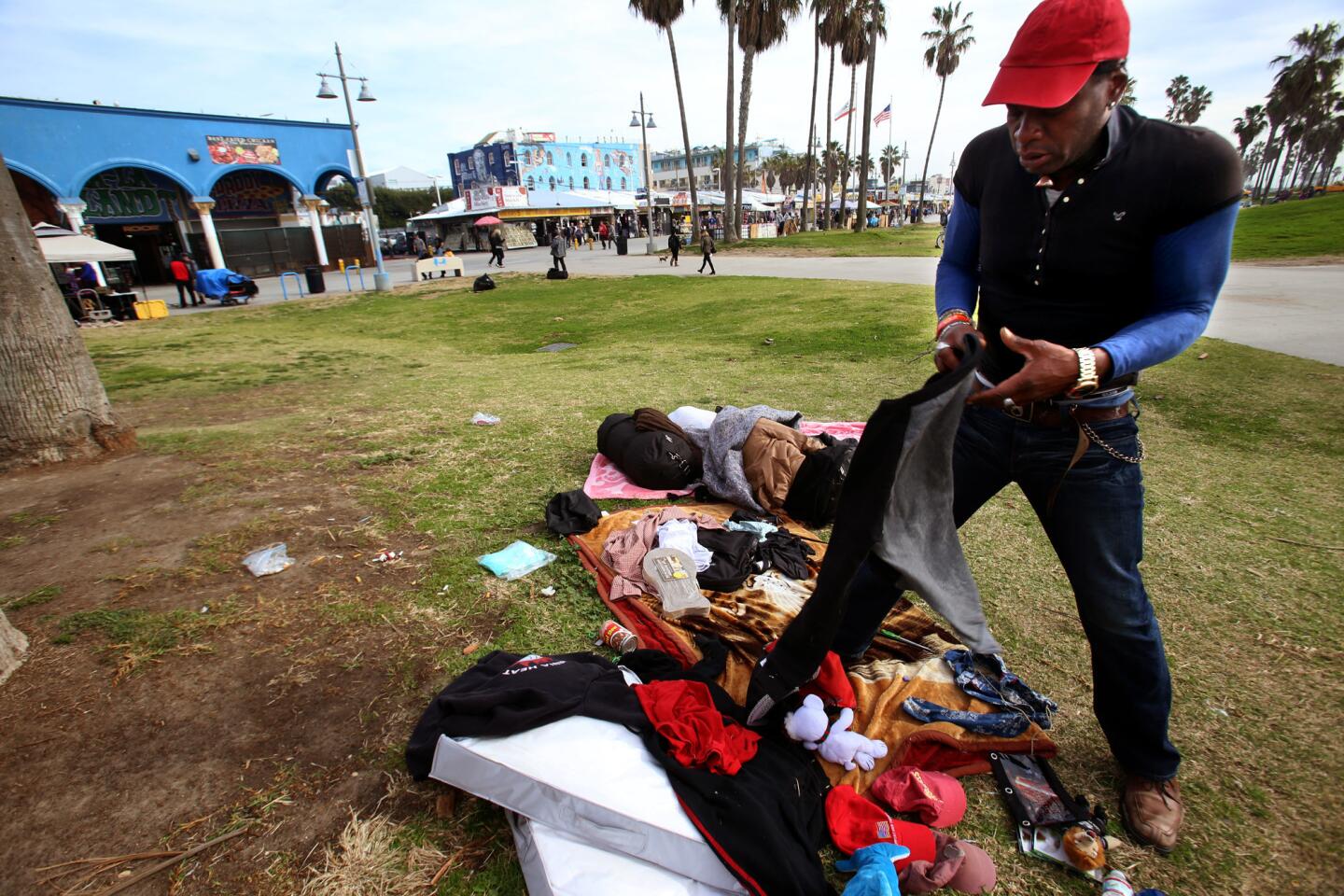Column: This Venice councilman, once on the verge of homelessness, is trying to help — but he’s getting heat from all sides
- Share via
“For a while,” says L.A. Councilman Mike Bonin, “I was teetering on the edge of homelessness. There were a few nights when I slept on the beach, and more than a few nights when I slept in my car or bounced between friends’ couches.
“I have a sense of how easy it is to go from being housed to un-housed, and a sense of how easy it is to go from sort of teetering on the edge to falling into the abyss.”
Bonin says he was addicted to alcohol for many years, then crystal meth. About 22 years ago, he managed to push the poison away.
The road to redemption, in his mind, required public service. Bonin became a council staffer and then launched his own political career almost four years ago.
In that time, convoys of people living in RVs have parked in Venice. Homeless encampments have sprawled across L.A., spawning detailed strategies from city and county officials, along with a November ballot measure to build more than $1 billion worth of housing.
Bonin has been one of the more proactive elected officials, despite political risks. As reported last week by my colleague Gale Holland, he’s in the middle of raging controversy over his proposals to do something about street camps in Venice, home to about 1,000 of the city’s 28,000 homeless people.
His plan: turn an abandoned senior center in the heart of Venice into a storage facility for homeless people.
The criticism: It will only attract more people, and the site is way too close to a school.
His plan: Build housing for homeless people over a city-owned parking lot a short walk from the beach.
The criticism: Beachfront living for the down and out, on prime real estate, at taxpayer expense? Why not sell the land and build where it’s cheaper?
Bonin gets it from homeless advocates, too. He supports a call for private security and cleanup crews to work the boardwalk and other hangouts, even though some say the aim is to bully and roust people and further gentrify the community.
Criticism of Bonin’s ideas is only fair, and disagreement is understandable. In Venice, residents and business owners don’t want people sleeping outside their homes or storefronts, or selling and using drugs. None of us would, no matter where we live.
The question is what to do about it, and in Los Angeles, the answer for far too long has been “nothing.”
We talk about the problems. We assemble committees. We devise strategies.
And then we punt.
Ten years ago, I attended a dog and pony show. Public officials lined up and promised to end homelessness in 10 years. They vowed to build five regional service centers in L.A. County so places like skid row didn’t bear the brunt.
Then came neighborhood opposition, and political courage died another death.
“I knew this would be controversial and difficult,” Bonin says of his initiatives, which won’t advance without funding and city approval.
But what he fears more than controversy is complacency, more plans sitting on shelves, more opportunities missed. Right now in Venice and beyond, the opportunity is there because out of either compassion or contempt, people agree there’s something shameful about having battalions of people huddled in rags, especially those who are veterans, or physically disabled, or severely mentally ill, or too destitute to afford the ever-elusive luxury of a roof.
What Bonin wants to do won’t end Venice’s woes; he’s taking short steps on a long walk. But if Measure HHH passes and there’s new housing, and if the county comes through on services for those who need help, and if a successful skid row intervention program is duplicated in Venice, real change may be possible over time.
Bonin drives past the abandoned senior center that would be a storage facility, so tents and heaps of belongings come off the streets. The nearby school comes into view and Bonin recounts the concerns of parents.
“I have a 2½-year-old,” he says. “I understand.”
But encampments have surrounded the school, he says, and for a while, an RV was parked on the periphery with a ridiculous painting on the side of it — two rabbits going at it.
Where are taggers when you need them?
We drive past the apartment building where Bonin lived when he walked in on an intruder and shooed him out, only to be threatened by the guy. It was a frightful experience, and neighborhood fears about crime are real to him. But he adds that “not all homeless people are criminals, and not all criminals are homeless.”
We drive to the parking lot — surrounded by apartment buildings — where he’d like to see new housing. If not here, somewhere nearby. The city owns dozens of lots like this, Bonin says, including vacant properties all over Los Angeles. In the midst of a critical housing shortage, how can you not make use of such properties, with every neighborhood doing its part — not just Venice — to address a human catastrophe?
There are ways to do it well, Bonin says, and he drives to three locations where housing for formerly homeless people blends in with other buildings. You can’t tell the difference. And despite neighbor fears, it’s better than the alternative — those same people living on sidewalks, in alleys and parks.
Venice, because its beaches and culture are world-famous, draws young people from everywhere. Some locals complain that those youngsters don’t need or deserve taxpayer-funded services because they’re willful dropouts content to party all night, sleep on the beach and make a nuisance of themselves.
That’s no doubt true of some of them, and Venice will never cease to be a magnet for them.
“But if you spend any time sitting and talking with people on the street and hearing their stories, it’s hard not to be haunted by the human misery people are suffering,” says Bonin. “I’ve spoken to senior citizens who had catastrophic illness and couldn’t afford to pay their expenses and wound up on the street. There are teenage runaways who suffered physical or sexual abuse. Survivors of domestic violence. Veterans. Those stories stick with me.”
And then there’s his own story, which tells him “no one is ever permanently lost.”
Get more of Steve Lopez’s work and follow him on Twitter @LATstevelopez
MORE FROM STEVE LOPEZ
Dodgers fan strikes back after Chicago attacks L.A. with lame cliches
This Trump supporter defies stereotypes -- and gives The Times a second chance
More to Read
Sign up for Essential California
The most important California stories and recommendations in your inbox every morning.
You may occasionally receive promotional content from the Los Angeles Times.
